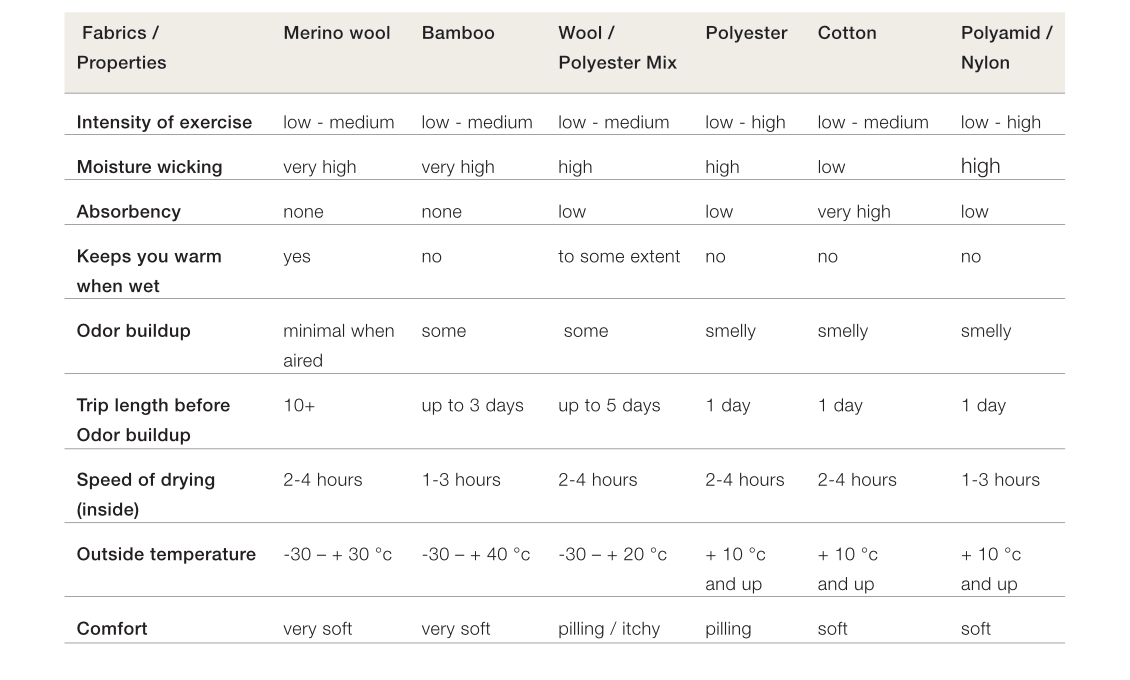
We love Merino wool because it is easy to work with, it's versatile, and it works for many types of adventures. Let's deep-dive a bit further into this fabric.
Sewing Tutorial
'Base layer' is the fancy word for underwear in the outdoor clothing world.
This is the first layer on your skin and can make all the difference when you're out on your adventures. The fabric you use should keep you dry, warm, and allow you to maintain all your flexibility. Base layers are made from many types of fabrics like Merino wool, polyester, cotton, polyamid, and bamboo. Below is a basic guide to get you started with base-layer fabrics. The final fabric you use depends on your adventures and your preferences.
This table can help you with the basics of choosing the right base-layer fabric depending on your adventure.

We love Merino wool because it is easy to work with, it's versatile, and it works for many types of adventures. Let's deep-dive a bit further into this fabric.
Merino wool is created from sheep, so it's a wonderfully soft, warm and natural material. The wool can be woven or knitted, and has different thicknesses. Woven Merino wool is mainly used for suits, coats and shirts. A thinly woven Merino wool shirt will also be great to wear in hot weather. Knitted Merino wool is usually warmer and better suited for underwear, sportswear, pullovers, hats, and mittens.
When buying Merino wool, the thickness of the wool is often given in terms of weights which they call a "micron count". The micron count for Merino wool is between 11.5 and 24 microns.
The downside of Merino wool is that moths love it too. Store your fabric or garment in a sealed plastic bag with dried lavendar or a piece of cedar wood. Air your garments frequently, and when you do wash them, use the Wool Cycle setting and liquid wool detergent. When the garment is still wet, pull gently into shape.
When looking for a base-layer fabric, it's not only about the type of fabric to use, but also the way that fabric is knitted. There's two main types of knitted fabrics:
Single-Jersey and Interlock.
Single Jersey fabrics are usually light-weight and can be very stretchy. They come in wool, cotton and other synthetic fibres. If you look closely, one side has a flat surface and the other is rippled. The flat surface should always be on the outside, and the rippled side on the inner side of your garment.
Interlock fabrics are usually medium-weight, firm, very soft, and absorbent. These fabrics are made from wool, and are therefore warmer and better at regulating body temperature than Single-Jersey fabrics. They're not only great as a base-layer, but also work as mid-layers and as warm linings for jackets, hoods, and vests.
If you look closely, you can see that both sides of the fabric look the same. With these fabrics, there's no need to pay attention which side faces inwards or outwards.